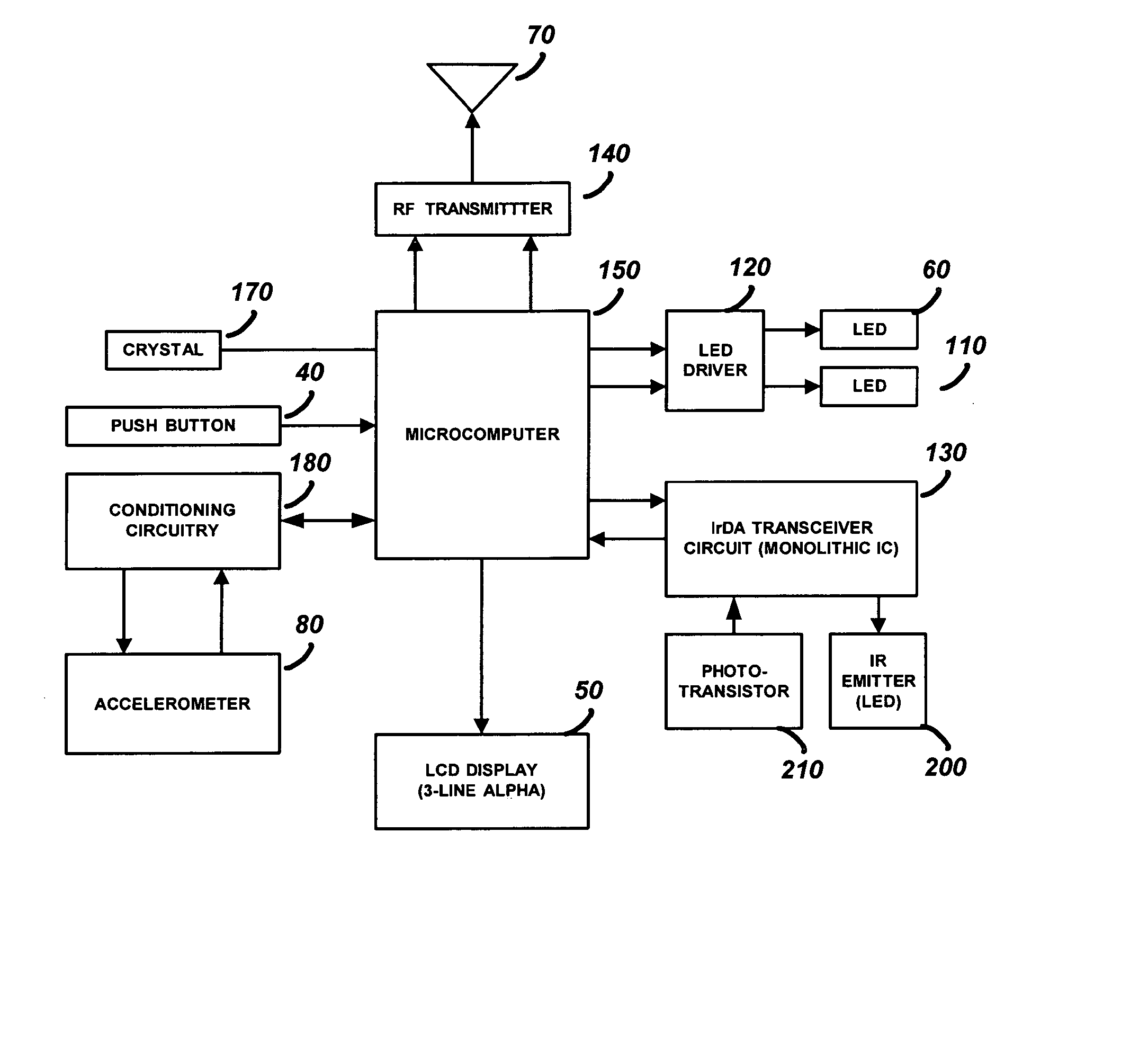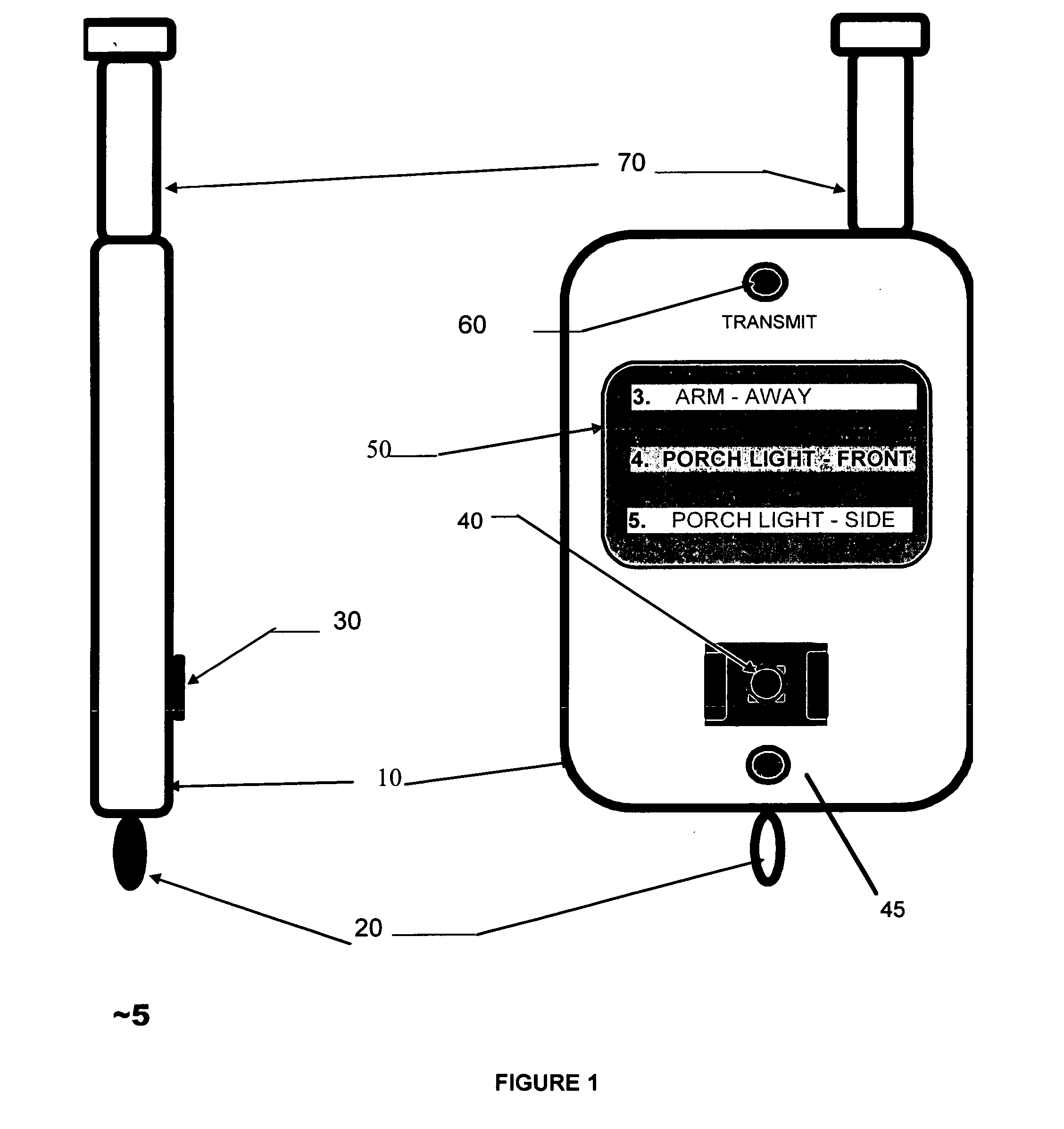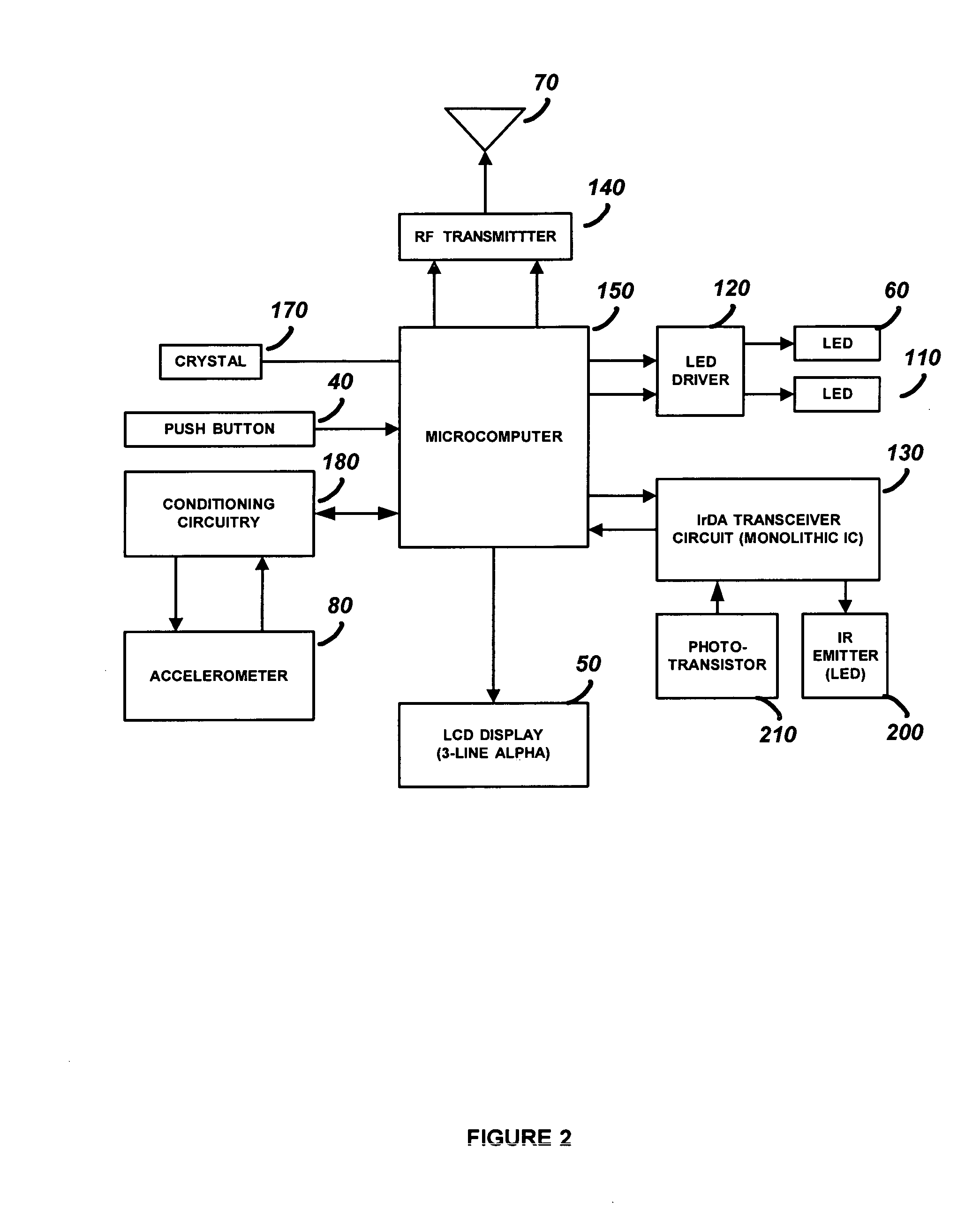One button multifuncion key fob for controlling a security system
- Summary
- Abstract
- Description
- Claims
- Application Information
AI Technical Summary
Benefits of technology
Problems solved by technology
Method used
Image
Examples
Embodiment Construction
[0018] The preferred embodiments of the present invention will now be described with respect to the Figures. FIG. 1 illustrates the security device 5 as a key fob. Shown are front and side views of the key fob housing 10. The key fob housing 10 has an antenna 70 and a keychain loop 20 attached to it. The antenna 70 provides a large transmission range, while the keychain loop 20 allows the security device 5 to be easily attached to a keychain. The antenna 70 may be extendable, fully retractable, or built-in (totally internal). The key fob housing 10 contains a recessed power on / select button 40 with guard 30, an LCD display 50, and an LED 60. The power button is pushed to turn the security device 5 on. If it is turned on accidentally, it will turn itself off after a short time of inactivity. Once the security device 5 is turned on, the LCD display 50 will be lit by the backlight LED 110 (shown in FIG. 2) and three control options will be displayed. For example, the LCD display 50 pre...
PUM
 Login to View More
Login to View More Abstract
Description
Claims
Application Information
 Login to View More
Login to View More - R&D
- Intellectual Property
- Life Sciences
- Materials
- Tech Scout
- Unparalleled Data Quality
- Higher Quality Content
- 60% Fewer Hallucinations
Browse by: Latest US Patents, China's latest patents, Technical Efficacy Thesaurus, Application Domain, Technology Topic, Popular Technical Reports.
© 2025 PatSnap. All rights reserved.Legal|Privacy policy|Modern Slavery Act Transparency Statement|Sitemap|About US| Contact US: help@patsnap.com



